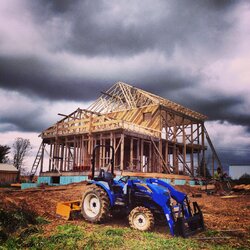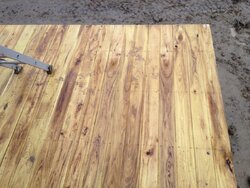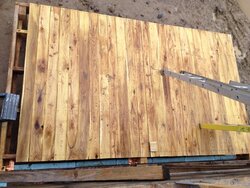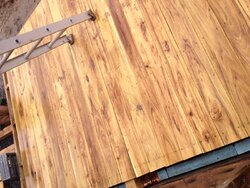I am sure this topic is not exactly appropriate for this forum but I thought maybe some of you might have some input or would this would be of interest to you also, so here goes.
I have just begun the task of determine what materials I want to use to replace my deck. Interestingly enough my research has lead my to one of my favorite firewood's Black Locust.
The goal is to replace my "Deck from Hell" with a material that will not require a lot of maintenance and not put a dent in my 4O1 K either.
So far some of the Pro's of BL are -
Rot resistant
Sustainable ( this can be procured locally in NY and Mass)
Long lasting ( this stuff should last well over 50 years)
Hard, strong, close-grained and very durable ( Janka hardness 1700 - 2000 harder than white oak)
Disposal ( it does not have any chemicals , all scrapes will find a home in my stove)
Maintenance free
Some of the Con's are -
Needs attention to proper drying other wise material will be difficult to fabricate
Drys to a grey color , this is fine with me but maybe a concern for some
High scrape rate - in order to get good deck boards
Large long boards are not available due to the size and shape of the trees, deck layout needs to address this.
So any of you fellow Black Locust fans have any experience building with this material ?
Any pointers to add to my lists ?
Moderate feel free to move this topic.
I have just begun the task of determine what materials I want to use to replace my deck. Interestingly enough my research has lead my to one of my favorite firewood's Black Locust.
The goal is to replace my "Deck from Hell" with a material that will not require a lot of maintenance and not put a dent in my 4O1 K either.
So far some of the Pro's of BL are -
Rot resistant
Sustainable ( this can be procured locally in NY and Mass)
Long lasting ( this stuff should last well over 50 years)
Hard, strong, close-grained and very durable ( Janka hardness 1700 - 2000 harder than white oak)
Disposal ( it does not have any chemicals , all scrapes will find a home in my stove)
Maintenance free
Some of the Con's are -
Needs attention to proper drying other wise material will be difficult to fabricate
Drys to a grey color , this is fine with me but maybe a concern for some
High scrape rate - in order to get good deck boards
Large long boards are not available due to the size and shape of the trees, deck layout needs to address this.
So any of you fellow Black Locust fans have any experience building with this material ?
Any pointers to add to my lists ?
Moderate feel free to move this topic.







